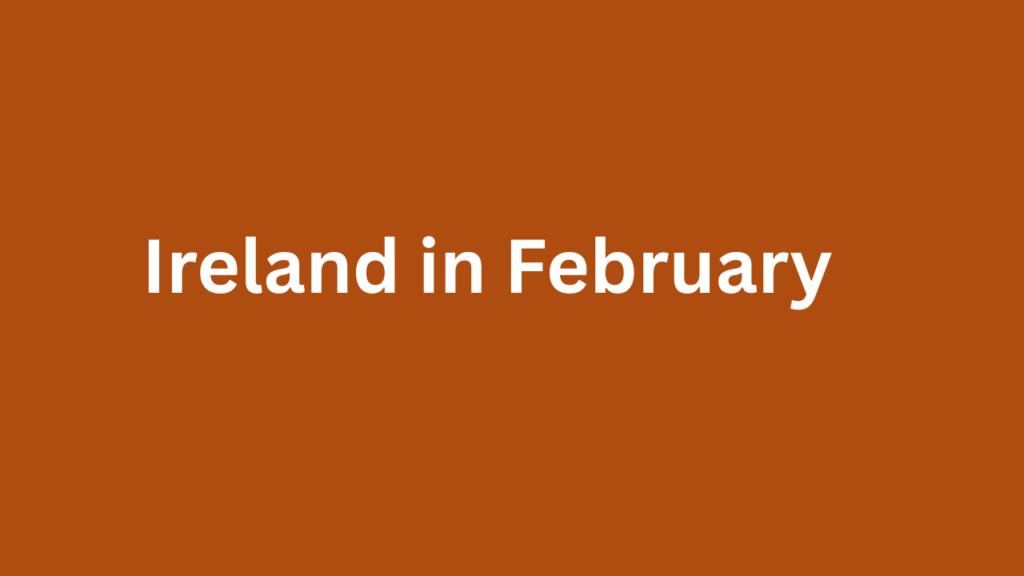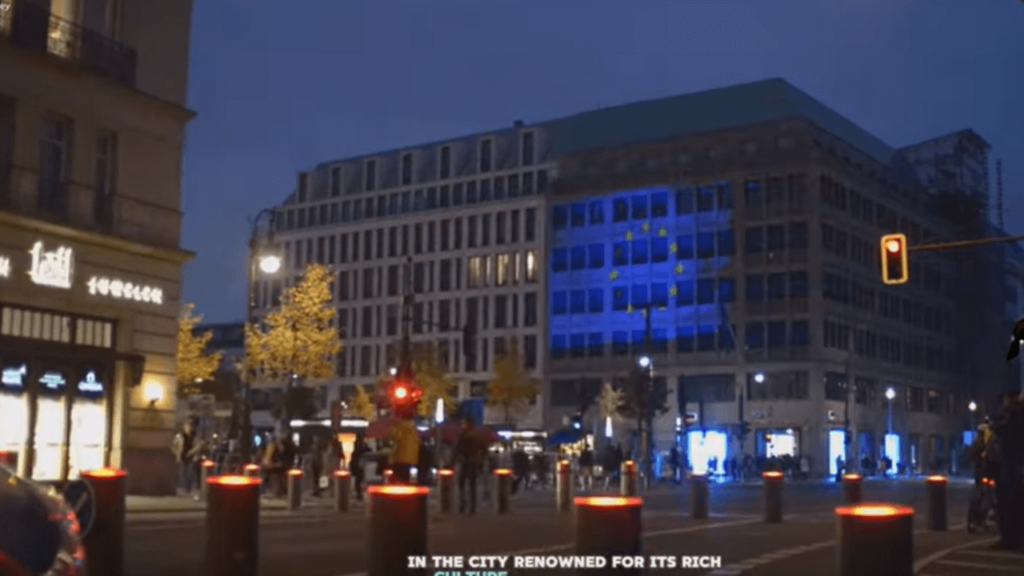When most people think about traveling to Ireland, they picture summer road trips along the Wild Atlantic Way, lively festivals in Galway, or strolling through Dublin’s cobbled streets under long summer evenings. But what about February — one of the quietest, coldest, and least touristy months of the year?
While February in Ireland isn’t everyone’s idea of an ideal getaway, it has its own charms. The landscapes are moody and dramatic, the crowds are thin, and there’s a surprising amount of cultural life happening indoors. For travelers who prefer cozy pubs over crowded tourist trails, affordable travel costs, and a more authentic connection to locals, February can be a rewarding month to visit.
In this article, I’ll share a detailed look at what Ireland in February is really like: the weather, things to do, events, travel costs, and practical tips. Along the way, I’ll add personal insights from my own experiences, plus research-backed advice to help you decide whether February is the right time for your Irish adventure.
Why Visit Ireland in February?
1. Off-Peak Travel Benefits
February is still very much the off-season for tourism in Ireland. That means:
- Shorter lines at attractions like the Book of Kells or the Cliffs of Moher.
- Easier reservations for hotels, B&Bs, and rental cars.
- Cheaper prices for flights and accommodation compared to spring and summer.
2. Authentic Local Atmosphere
With fewer tourists, towns, and cities feel more like themselves. Pubs are filled with locals rather than tour groups, and conversations with residents feel less hurried. If you’re seeking an “everyday” Ireland rather than a postcard version, February delivers.
3. Late Winter Beauty
Ireland doesn’t hibernate in winter. The hills are still green, the coasts are as wild as ever, and occasional frosty mornings add a crisp beauty to the landscape. By mid-February, you’ll even start to notice signs of spring: daffodils, lambs in the fields, and longer days.
Personal Note: On one February trip to Kerry, I drove the Ring of Kerry nearly alone. Roads that are usually clogged in summer were wide open, and I could stop at viewpoints without waiting. The moody skies, rolling mists, and sudden bursts of sunlight made it one of my most memorable Irish drives.
Weather in Ireland in February
The biggest challenge with February travel is, of course, the weather. But knowing what to expect helps you prepare.
- Average Temperatures: 2°C to 9°C (36°F to 48°F). Nights are colder than January, but days can feel mild compared to continental Europe.
- Rainfall: Frequent showers and drizzle are still common, though February is slightly drier than December and January.
- Snow: Rare at sea level, but possible in the hills and mountains.
- Daylight Hours: Around 9 hours at the start of the month (sunrise 8:00 AM, sunset 5:20 PM) and closer to 11 hours by the end. The longer days make February noticeably brighter than January.
Key Takeaway: February weather is unpredictable — you may get bright blue skies one morning and heavy rain the next afternoon. Pack layers and plan flexible itineraries.
What to Pack for February in Ireland
Having the right gear makes all the difference. Here’s a practical list:
- Waterproof Jacket: A must-have, ideally insulated and windproof.
- Warm Layers: Sweaters, fleece, or thermal base layers.
- Sturdy Waterproof Boots: Great for muddy countryside walks and rainy city days.
- Hat, Gloves, Scarf: Essential for windy coasts and evening walks.
- Casual Smart Clothes: Pubs and restaurants are relaxed but tidy.
- Reusable Water Bottle and Umbrella: Handy for city exploring.
Personal Tip: Forget flimsy umbrellas — the Irish wind will destroy them. A hooded raincoat is far more reliable.
Things to Do in Ireland in February
Despite the chilly weather, there’s plenty to enjoy — both indoors and outdoors.
1. City Exploration
Cities like Dublin, Cork, Galway, and Limerick are vibrant year-round. February is great for:
- Touring museums and galleries (the National Gallery in Dublin, Crawford Art Gallery in Cork).
- Visiting historic sites (Dublin Castle, Kilmainham Gaol, or Galway Cathedral).
- Enjoying indoor markets and cafes.
With fewer crowds, you’ll be able to explore at a leisurely pace.
2. Pub Culture
Nothing beats the warmth of an Irish pub in winter. Many evenings feature live traditional music, especially in Galway, Dingle, and Kilkenny. The combination of hearty food, pints of Guinness, and fireside conversations is an experience in itself.
Personal Note: On a February night in Galway, I ducked into a pub during a downpour. Within minutes, a group of musicians pulled out fiddles and a bodhrán, and the place filled with song. It was spontaneous, communal, and unforgettable.
3. Castles and Heritage Sites
Many of Ireland’s castles and manors stay open year-round, including:
- Kilkenny Castle
- Bunratty Castle & Folk Park
- Malahide Castle near Dublin
These sites are far less crowded in February, giving you time to really absorb the history.
4. Winter Walks and Coastal Drives
If you don’t mind braving the cold, February is perfect for atmospheric walks and drives:
- Cliffs of Moher: Wild and windswept, but with minimal crowds.
- Howth Cliff Walk: A great day trip from Dublin.
- Ring of Kerry or Dingle Peninsula: Easier to drive without traffic.
- Causeway Coast (Northern Ireland): Stunning in moody winter light.
5. Festivals and Events
Even in winter, Ireland has cultural life buzzing indoors:
- St. Brigid’s Day (February 1st): Celebrated with crafts, cross-making, and cultural events. It’s now recognized as a national holiday in Ireland, reflecting the blending of Christian and pre-Christian traditions.
- Valentine’s Day in Dublin: Dublin’s Whitefriar Street Church is home to relics of St. Valentine, making it a unique stop in mid-February.
- Dublin International Film Festival: Usually held in February, showcasing Irish and global cinema.
- Six Nations Rugby: Ireland’s rugby matches in February electrify pubs across the country.
Food and Drink in February
Irish food in winter is all about warmth and comfort. Popular dishes include:
- Irish Stew: Lamb or beef slow-cooked with potatoes, carrots, and onions.
- Seafood Chowder: Creamy, hearty, and best with brown soda bread.
- Colcannon or Champ: Potato dishes mixed with greens or scallions.
- Seasonal Seafood: Oysters are especially good in colder months.
- Hot Drinks: Irish coffee (coffee, whiskey, sugar, cream) is a classic winter warmer.
Personal Tip: One of the best meals I had in February was a steaming bowl of beef and Guinness stew in Kilkenny, paired with live music in a snug pub corner. It wasn’t just food — it was the perfect match for a winter evening.
Travel Costs in February
Traveling in February can be a bargain:
- Flights: Some of the cheapest fares of the year, especially mid-month.
- Accommodation: Significant discounts (20–40% cheaper than summer). Boutique hotels and B&Bs are easier to book last-minute.
- Car Rentals: Cheaper and more available than in peak months.
- Attractions: Same entry prices, but without long lines or crowds.
This makes February one of the best months for budget-conscious travelers.
Transportation in February
- Public Transport: Reliable in cities and between major towns.
- Driving: Roads are quiet, but rural areas can be slippery in frost. Stick to daylight driving whenever possible.
- Walking: Cities are walkable, but pack waterproof shoes.
Tip: Because days are shorter, plan big drives or hikes earlier in the day and save evenings for cozy pubs or indoor attractions.
Common Concerns About Visiting Ireland in February
Q: Is February too cold?
It’s chilly, but Ireland’s winters are relatively mild compared to much of Europe. With good clothing, you’ll be comfortable.
Q: Does it snow a lot?
Not usually. Snow at low levels is rare. Higher mountain areas like Wicklow or Connemara may see snow.
Q: Will everything be open?
Major attractions and cities are open. Some rural B&Bs and seasonal sites close, but you’ll never run out of things to do.
Q: Is February a good time for hiking?
Yes, if you stick to lower trails and prepare for wet conditions. Coastal and forest walks are great options.
Q: Is February cheaper than January?
Yes, it’s one of the cheapest months, though late February can see prices rise slightly as spring approaches.
Pros and Cons of Visiting in February
Pros:
- Cheapest travel costs of the year.
- Fewer tourists, authentic atmosphere.
- Cozy pub culture and lively indoor events.
- Noticeably longer days than January.
- Unique cultural events like St. Brigid’s Day.
Cons:
- Still cold, damp, and unpredictable weather.
- Short daylight hours compared to spring/summer.
- Some rural spots closed for winter.
- Limited outdoor festival vibe.
A Personal Reflection on February in Ireland
On my last February trip to Ireland, I spent a week split between Dublin and Galway. In Dublin, I caught part of the International Film Festival and joined locals watching a Six Nations rugby match in a buzzing pub. In Galway, I took day trips to the Cliffs of Moher and Connemara, both misty and nearly empty — landscapes that felt like something out of an Irish myth.
What struck me most was the balance between quiet and liveliness: quiet roads and attractions, but lively evenings indoors, where music, laughter, and storytelling thrived. Ireland in February isn’t about long days on the beach — it’s about cozy warmth against the backdrop of winter.
Final Thoughts
Ireland in February isn’t for everyone. If you want sunshine, festivals, and long days, wait for summer. But if you crave affordability, authenticity, and the moody beauty of late winter landscapes, February could be your perfect time.
The key is preparation: pack warm layers, plan for rain, embrace cozy evenings, and keep your plans flexible. You’ll discover that Ireland’s magic isn’t seasonal — it’s year-round, found as much in a fireside song as in a sunlit cliff view.
So, if you’re considering Ireland in February, don’t dismiss it as “too cold” or “too quiet.” Embrace it for what it is: a chance to experience the Emerald Isle in a slower, deeper, and often more rewarding way.

Hi, I’m Tanvir, the founder and author of Explore Ireland Now. With a deep love for Ireland and its rich culture, history, and landscapes, I created this site to share everything that makes this beautiful country worth exploring. Whether you’re a local looking for hidden gems or a traveler planning your next adventure, I provide insightful guides, tips, and recommendations to help you experience Ireland to the fullest.
From stunning landscapes to vibrant cities and quaint villages, Ireland is full of wonders waiting to be discovered. Through my personal experiences and research, I aim to bring you the most up-to-date information and inspiration for your journey.
Thank you for visiting Explore Ireland Now—I hope my content helps you uncover all that this incredible country has to offer! If you have any questions or need travel advice, feel free to reach out.



